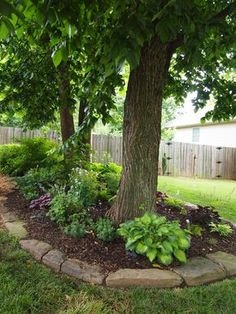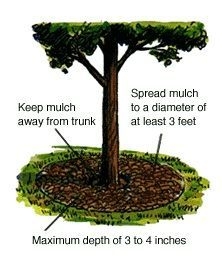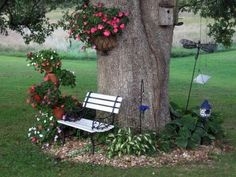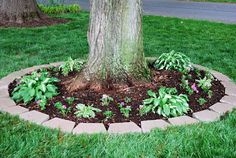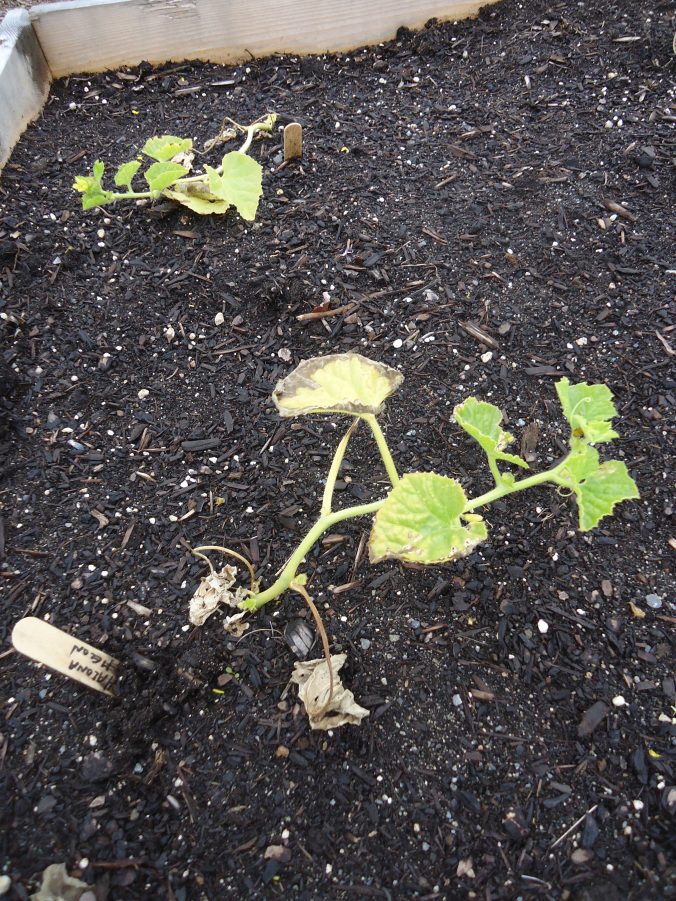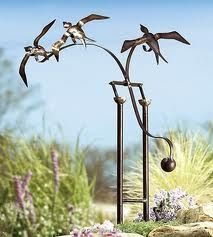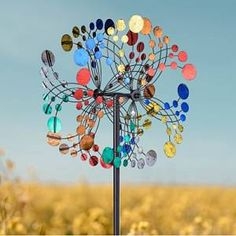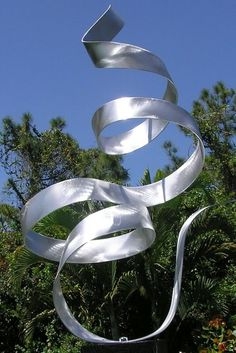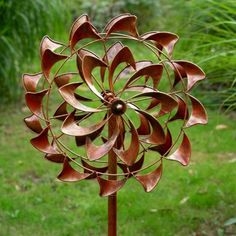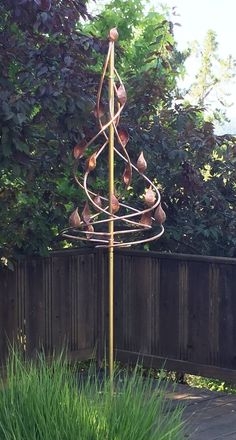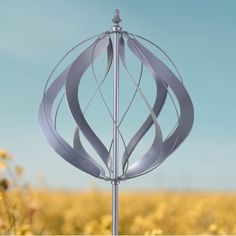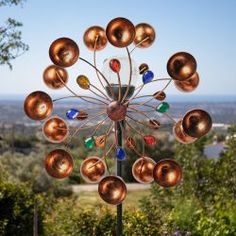Do you have a backyard tree that is unsightly underneath where no grass is growing? You can landscape to make the area look nice. The first thing is not to harm the tree. Never pile the dirt around the ground roots or on the bark. Many trees have surface-feeding roots like maples, cherries, and plums that can be suffocated. Remove the soil around the tree being careful not to damage roots or the bark.

Bring in new soil to replace the soil you remove and top with a mulch. Plant in shade-tolerant perennials like hostas, ribbon grass, ferns, coral bells, or fast-spreading groundcovers relies on attractive colored foliage. Remember the plants under a tree need a little more water than plants growing away from trees because the tree root sucks more moisture.
Early blooming bulbs work great under trees like crocus, grape hyacinths, and early daffodils. The yellowing foliage will give way to the growing perennials or annuals.
If you want to choose another route, instead of using plants fill in with a layer of sand. Then place patio blocks around and sit some chairs or a bench under the tree. If you want some color, plant annuals in buckets like impatiens or coleus. I have seen wood decks built around trees.

If you want to keep it simple use these rubber mats around the trunk. They conserve moisture and prevent weeds and grass from growing around the tree which is especially important when the tree is young. You can then place a fountain or sculpture on the mat for interest.

